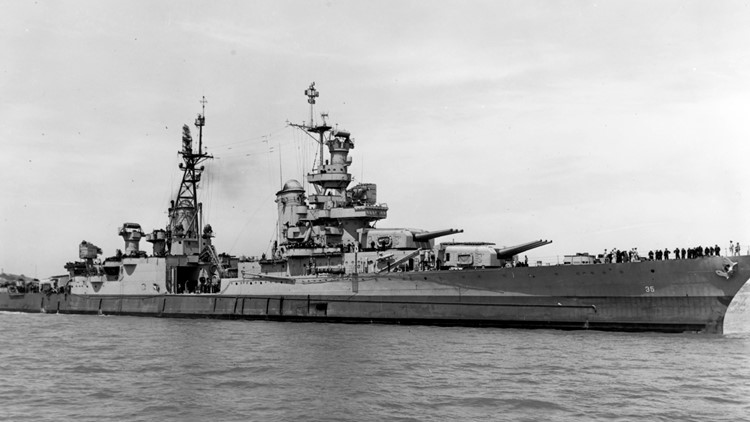CLEVELAND — Sailors from Cleveland and Niles who were listed as "unaccounted for" when the USS Indianapolis was sunk in the closing weeks of World War II have now been classifed as "buried at sea" by the United States Navy.
Seaman 2nd Class Albert Raymond Kelly from Cleveland and Ship's Service Man Laundryman 3rd Class Angelo Anthony Sudano of Niles were two of 13 sailors from the USS Indianapolis recently discovered to have been given Navy committal ceremonies 77 years ago. In response, the Navy changed their status from “unaccounted for” to “buried at sea.”
Two Japanese torpedoes hit the USS Indianapolis on July 30, 1945, when the heavy cruiser was on its way to the Philippines from Guam. The Indianapolis had just delivered parts of the atomic bomb that would be dropped on Japan a month later.
The ship sank in just 12 to 15 minutes. The Navy estimates about 300 sailors were trapped inside and went down with the vessel.
The remaining 800 sailors abandoned ship, but rescue vessels didn't arrive for four days. Hundreds of sailors died in the interim from injuries, dehydration and shark attacks. Only 316 survived. It's known as one of the biggest tragedies in U.S. naval history.
Rick Stone, retired chief naval historian a the Naval History and Heritage Command, said researchers found the names of the 13 sailors in deck logs, commanders' reports and war diaries kept by the seven ships that recovered bodies.
These ships gave sea burials to 91 identified men, but for unknown reasons the names of only 40 of them were reported by the military. Another 51 names were not. The 13 newly identified come from this latter group. Stone said researchers have open cases on the remaining 38 and have “good clues” for the identities of five.
Stone suspects the names fell through bureaucratic cracks and were never followed up on.
It didn't help that the Navy announced the loss of the ship on the same day the war ended.
“The sinking of the Indy, which would have been front page news a week earlier, was kind of relegated to one of the midsections of the newspaper,” he said.
Researchers with Stone's private foundation began looking for the records in January 2021. Stone said he started a file on the Indianapolis while working at the Joint POW/MIA Accounting Agency and seeing hints that some sailors listed as missing had actually been found.
“Giving their loved ones and their families some kind of closure — I mean frankly and in all sincerity — it’s the greatest gift I can imagine,” Stone said.
Stone's group, Chief Rick Stone and Family Charitable Foundation worked with the Naval History and Heritage Command, the Navy Casualty Office, the USS Indianapolis Survivors Association and the USS Indianapolis Legacy Organization to find their names.
Capt. Robert McMahon, director of the Navy Casualty Office, said bringing closure to families of those lost at sea is a “solemn duty and obligation” he takes to heart.
“Nothing is more important to me than giving families that knowledge when the unthinkable happens,” he said. “No amount of time lessens the loss, however, if we can bring some certainty to loved ones, even seven decades later, we are keeping faith with those we lost.”
Related Stories:



